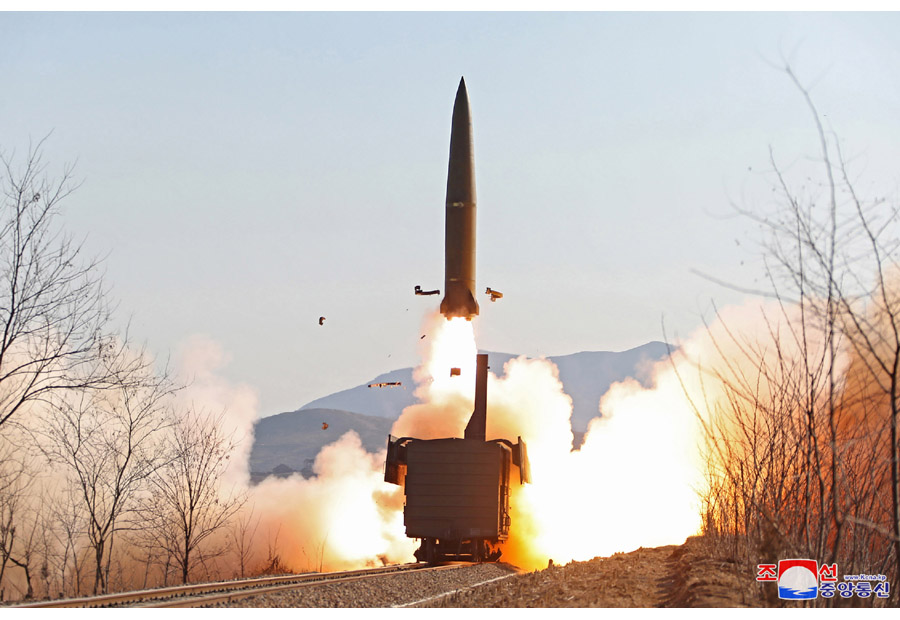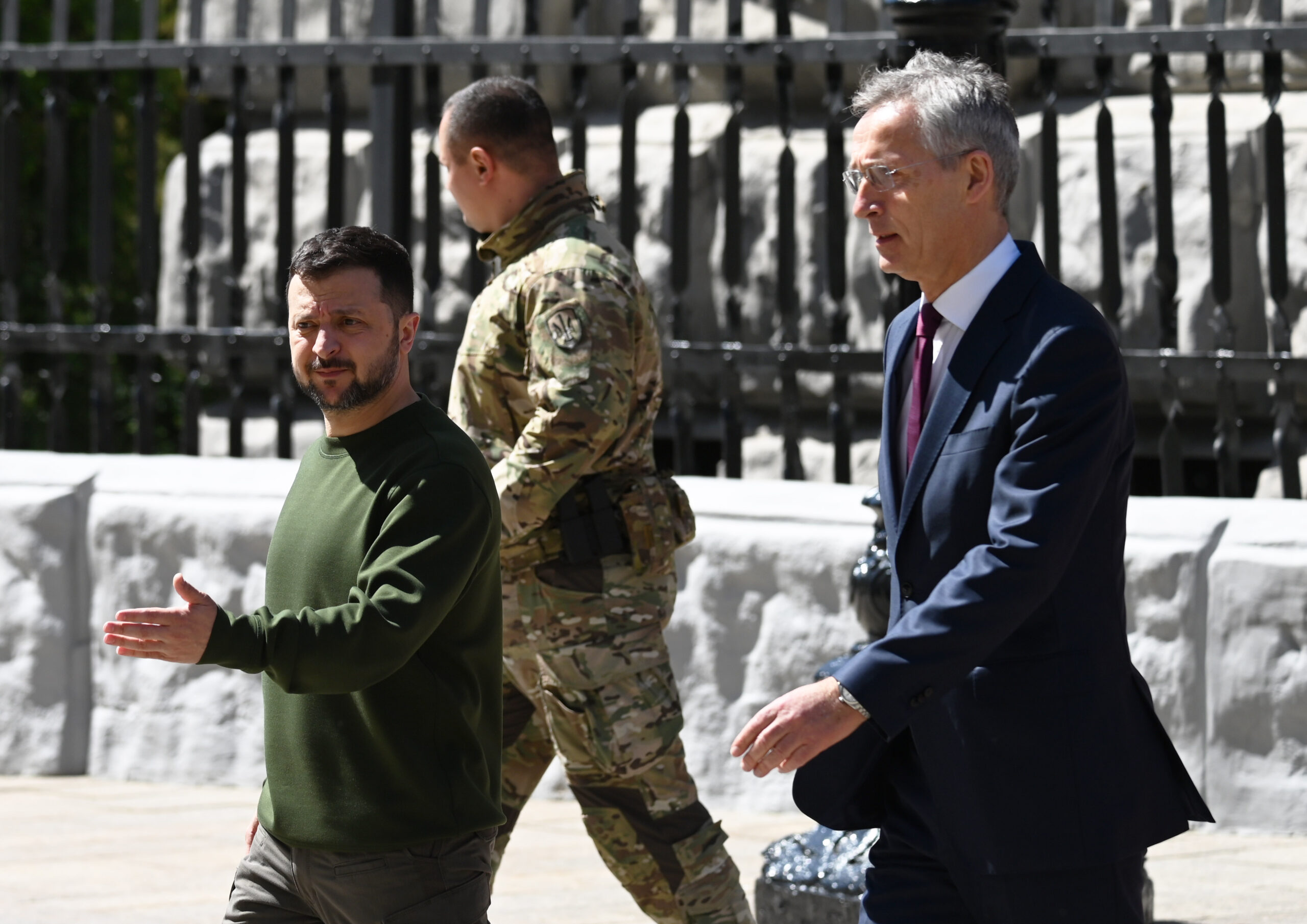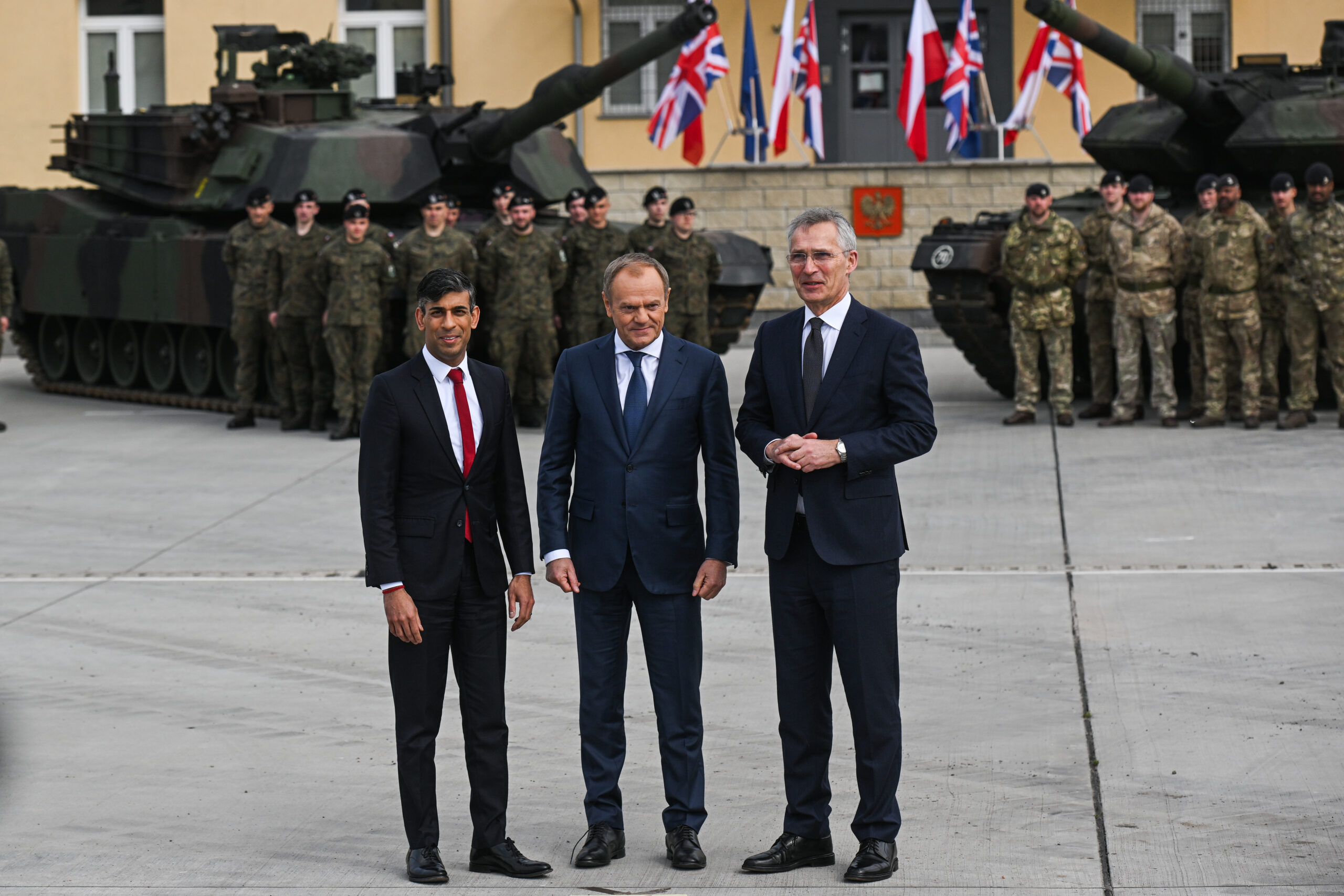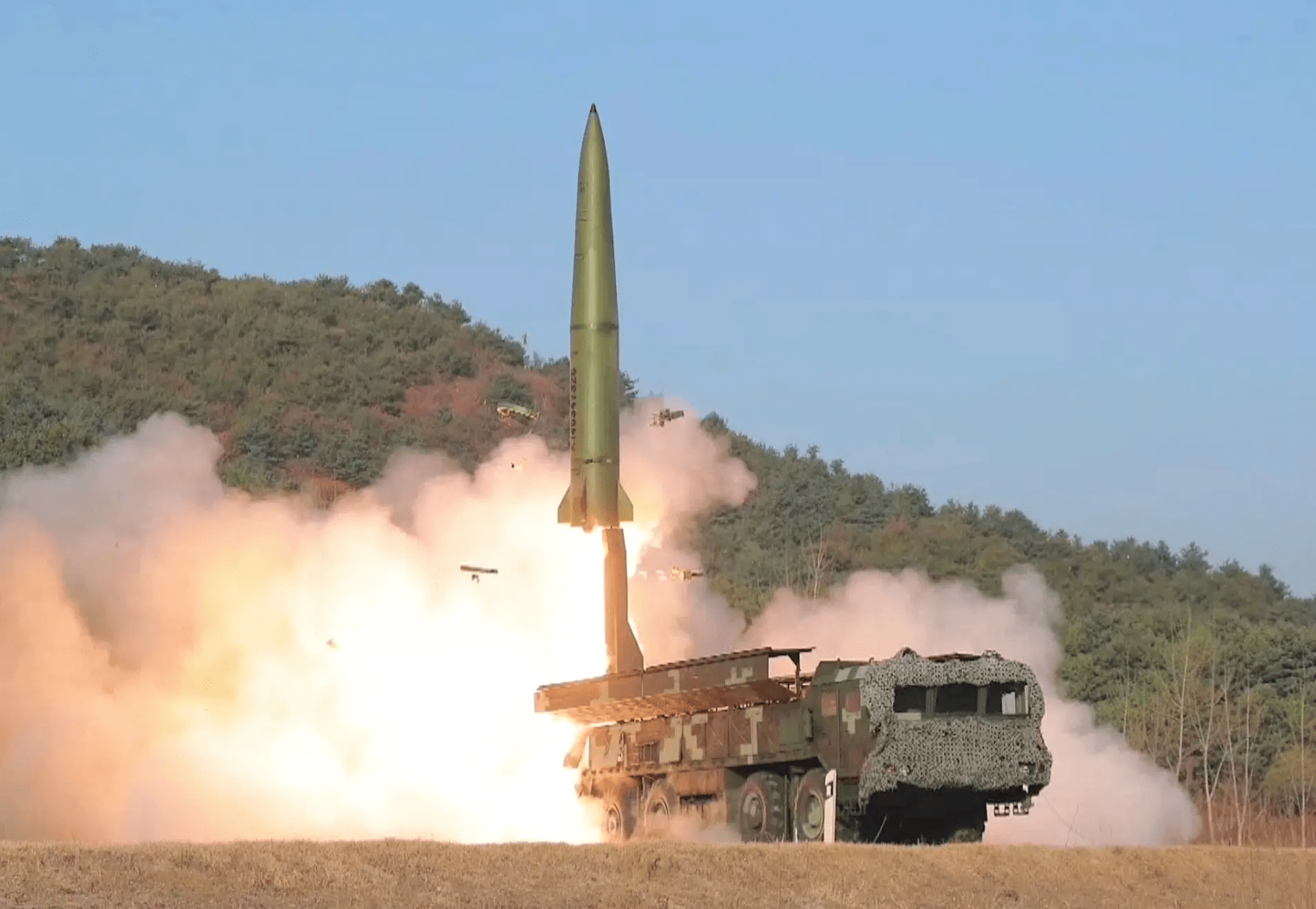It seems that Russia’s combat experiences with North Korean short-range ballistic missiles (SRBMs) may have been markedly less successful than they would have hoped for. According to a report from Ukrainian state prosecutors, around half of the North Korean KN-23 SRBMs — also known as Hwasong-11 — that have been launched by Russia not only deviated from their trajectory but also exploded in midair.
The analysis from the Ukrainian state prosecutors was based on the debris from 21 of around 50 North Korean ballistic missiles launched by Russia between late December and late February.
“About half of the North Korean missiles lost their programmed trajectories and exploded in the air; in such cases, the debris was not recovered,” the office of Ukrainian state prosecutor Andriy Kostin told Reuters.

Overall, North Korean-supplied missiles make up only a very small fraction of the weapons used in Russian strikes on Ukraine, but there has long been concern about the direction the burgeoning military relationship between Moscow and Pyongyang could take. As well as Russia unlocking another source of SRBMs and much-needed artillery projectiles, there have been additional concerns that Russian expertise in the development of ballistic missiles and nuclear weapons — as well as other weapons and technologies — could be provided to North Korea.
The Ukrainian analysis points to the last recorded use of a KN-23 on February 27, after which the stocks of around 50 KN-23s delivered to Russia were exhausted.

The attacks that involved North Korean SRBMs began on December 30, 2023, and altogether killed 24 people, wounded 115, and damaged a number of residential buildings and industrial facilities, Ukrainian authorities report. Launch sites for the missiles have meanwhile been identified in the Belgorod, Voronezh, and Kursk regions of western Russia.
Ukrainian authorities are said to be still investigating whether North Korean instructors were sent to Russia to assist with and monitor the missile launches. It’s also notable that no details were provided of attempted intercepts of any of the KN-23s, although Ukrainian success in this regard remains a possibility, with the U.S.-made Patriot air defense system offering an anti-ballistic missile capability.
Before diving into more developments from the conflict in Ukraine, The War Zone readers can review our previous coverage here.
The Latest
Ukrainian security services have reportedly uncovered a plot to assassinate President Volodymyr Zelensky. Kyiv announced today that it had detained two Ukrainian security officials alleged to be involved in the Russian-coordinated plot that was to have targeted the country’s leader as well as other senior Ukrainian officials.
The Security Service of Ukraine (SBU) said in a statement that it had exposed a network of agents run by Russia’s Federal Security Service (FSB) whose aim was to assassinate Zelensky and other Ukrainian political and military officials.
Kyiv says that the Ukrainian leader has been targeted by Russia on multiple other occasions, including at the beginning of Moscow’s full-scale invasion in February 2022.
“The network, whose activities were supervised by the FSB from Moscow, included two colonels of the State Security Department who were leaking classified information to Russia,” the SBU said.
The SBU claims that Russia worked to identify individuals close to Zelensky’s security detail who would have the opportunity to take the Ukrainian leader hostage and kill him.
This is not the first time that alleged suspects in assassination plots targeting Zelensky have been identified.
Last month, Polish and Ukrainian prosecutors announced they had detained a man suspected of aiding a Russian assassination plot on Ukraine’s leader. Polish prosecutors allege that the man had been tasked with collecting information about Rzeszow-Jasionka Airport in Poland, which is used by the Ukrainian president.
In August last year, the SBU revealed they had arrested a woman alleged to be involved in another plot to kill Zelensky. In this instance, the suspect was said to have been trying to uncover details of his movements during a presidential visit to the southern Mykolaiv region, on which it was said Russia was planning to unleash a major air assault.

Among the latest videos from the battlefield is this footage of intense combat, fought by Ukrainian Marines on the left bank of the Dnieper River. A long-running campaign has seen numerous clashes along the river during and after the Ukrainian counteroffensive to retake Kherson, in southern Ukraine. Typically, we have seen soldiers, including Ukrainian Marines taking to inflatable boats and other small riverine craft. But as this video demonstrates, fierce fighting is also taking place on land, with these troops battling against their Russian foes in dense forest.
Polish special services say they found and dismantled bugging devices in a room where the council of ministers was due to meet today, the special services coordinator’s spokesman said, Reuters reports.
“The State Protection Service, in cooperation with the Internal Security Agency, detected and dismantled devices that could be used for eavesdropping in the room where the meeting of the Council of Ministers is to be held today in Katowice”, Jacek Dobrzynski wrote on social media platform X.
“The services are carrying out further activities in this matter,” Dobrzynski added.
Poland has been an ardent supporter of Ukraine since the start of Russia’s full-scale invasion, including providing military equipment and maintenance services, including for main battle tanks.
Poland has also served as the major transit hub for Western military supplies headed toward Ukraine.
The account from the Polish special services seems to be indicative of more widespread Russian efforts to destabilize the West and drive a wedge between Ukraine and its European allies. European intelligence agencies recently warned their governments that Moscow is plotting violent acts of sabotage across the continent, expected to include covert bombings, arson, and attacks on infrastructure.
In more news related to both Poland and air defense systems, reports from Warsaw indicate that the Polish Armed Forces are no longer using the Soviet-era S-200 (SA-5 Gammon) long-range surface-to-air missile. This is the weapon that Ukraine claimed was used to down the Russian Tu-22M3 Backfire-C bomber that crashed in the Stavropol territory in southern Russia last month. You can read our full report of the incident here.
Interestingly, the S-200 was reportedly retired from Ukrainian service in 2013, but the weapon was apparently brought back into use in a land-attack capacity after February 2022. There has been speculation since that the reintroduction of the S-200 — which has also been implicated in other long-range shoot-downs of Russian aircraft — may have been assisted by Poland.
Last month, a Ukrainian defense official confirmed to TWZ that Ukraine had received “help from partners” to produce an updated guidance system for the S-200. “The missile itself has a good maneuvering system, so if provided with proper guidance is quite a modern weapon,” the official added.
A day after Russia announced plans to conduct drills practicing the use of tactical nuclear weapons, as a response to what it claims are provocative threats from the West, Belarus has said that it will do the same.
According to a report from Russian state news agency TASS, Belarus has already begun checks on the readiness of its armed forces to deploy tactical nuclear weapons, simultaneously with a drill being carried out by Russia’s Southern Military District.
An official video showed Su-25 Frogfoot attack aircraft of the Belarusian Air Force taking part in maneuvers at an undisclosed location. Reportedly, the Belarusian Su-25s practiced dispersal at forward operating locations. Somewhat surprisingly, in the video, the aircraft appear to be carrying AgitAB-500-300 leaflet-dispensing propaganda bombs.
Reports last year suggested that Belarusian Su-25s were in line to be adapted for nuclear missions, apparently originating in a statement from the Belarusian government. When in Soviet service, at least some Su-25s were capable of carrying tactical nuclear bombs.
In June last year, Russian President Vladimir Putin confirmed that tactical nuclear weapons — understood to be air-dropped gravity bombs — had been deployed to Belarus.
In April this year, Belarusian leader Alexander Lukashenko said that “several dozen” Russian tactical nuclear weapons had been deployed in his country in line with an agreement announced last year by himself and Putin.

Polish Prime Minister Donald Tusk has called for Europe to boost its air defense capabilities as it recalibrates its military posture in light of the threat from Russia, Reuters reports. Once again, the Polish leader called for the establishment of a common European air defense system, under “a European project that will be a financial effort to build a dome over Europe.”
Poland has embarked on an extensive overhaul of its armed forces since Russia launched its full-scale invasion of Ukraine in February 2022. It has increased its defense spending to four percent of its Gross Domestic Product (double the figure recommended by NATO).
Speaking at the European Economic Congress in Katowice, Poland, Tusk said European Union countries should take joint action to increase spending on defense by at least 100 billion euros ($107 billion).
“Europe must be prepared in the next dozen or so months and the entire next five years for a situation in which no power in the world will dare raise a hand against it,” Tusk said.
“Big money will move the war away from Europe’s borders for a long time, perhaps permanently,” the Polish leader added.

More claims have emerged about the alleged use of chemical weapons on the battlefield in Ukraine. According to the Organization for the Prohibition of Chemical Weapons (OPCW), based in The Hague, Russia and Ukraine accuse each other of using banned toxins in the conflict.
The OPCW says the accusations are “insufficiently substantiated” but considers that “the situation remains volatile and extremely concerning regarding the possible re-emergence of the use of toxic chemicals as weapons.”
As we reported last week, U.S. officials have accused Russia of using chemical weapons in Ukraine, in violation of international laws banning their use.
According to U.S. State Department officials, Russia used chloropicrin — a type of choking agent — to win “battlefield gains” in Ukraine.
U.S. officials said this was not an “isolated” incident and that Russian forces have also made regular use of “riot control agents,” or tear gas, during the war.
Russia has denied the allegations.
Under the Chemical Weapons Convention, any toxic chemical used with the purpose to cause harm or death, is considered a chemical weapon.
“It is against the Convention to use riot control agents at war on the battlefield. If used as a method of warfare, these agents are considered chemical weapons and, hence, are prohibited under the Convention,” the OPCW said.
Russian President Vladimir Putin was sworn into office today in a ceremony at the Grand Kremlin Palace, marking the official start of his record-breaking fifth term in office. Putin was swept back into power during the presidential elections in March that took place with no genuine opposition.
After taking the presidential oath, Putin made a brief address during which he said he did not rule out dialogue with the West, but it needed to be on equal terms, Reuters reports.
Putin said: “The dialogue, including on issues of security and strategic stability, is possible, but not from a position of force.”
In his speech, Putin said that Russia was open to developing relations with other countries he described as “the world’s majority.”

An additional photo has emerged showing a Ukrainian uncrewed surface vessel (USV) armed with a heat-seeking air-to-air missile. As we discussed in our previous article, the adaptation seems to have been made to provide the drone boats with protection against the Russian helicopters and fixed-wing aircraft that are increasingly being used to counter them.
The new photo shows the wreckage of a single R-73 (AA-11 Archer) infrared-guided air-to-air missile and its pylon on the USV that was successfully attacked by a Russian Navy Ka-29 Helix-B assault helicopter, which targeted it with gunfire in widely seen videos. Other imagery of the USV shows two launch rails for missiles, leading to the possibility that another R-73 was fired before the drone boat was destroyed. This would tally with some Russian accounts, which talk of an unsuccessful missile shot being taken against a Russian Mi-8 Hip helicopter that was also in the vicinity.
The Ukrainian Armiya TV military channel recently published a video showing a U.S.-supplied M1A1 Abrams tank of the 47th Separate Mechanized Brigade, said to be operating in the Avdiivka direction. It is unclear when the video dates from, but the opportunity to see the Ukrainian Abrams at close quarters is a valuable one.
At the end of April, reports surfaced suggesting that Ukraine had withdrawn its Abrams tanks from frontline operations — for the time being, at least. It’s said that the reason for the move is their vulnerability to drone attacks, although the reasoning is somewhat hazy. As we speculated at the time, it seems more likely that the tanks were pulled since they are considered especially valuable assets, and not worth the risk of having more examples knocked out or captured by Russia.

The next video purports to show the loss of the fifth Ukrainian Abrams in combat, apparently somewhere west of Avdiivka.
Meanwhile, there are reports that Ukraine may since have lost as many as seven Abrams. The following footage shows another example from the 47th Separate Mechanized Brigade, with the tank likely also knocked out during fighting around Avdiivka.
The Iranian-designed Shahed drone has become one of the most feared as well as the most influential weapons of the war in Ukraine. Direct copies are now being built in Russia, while the general concept has apparently inspired similar designs elsewhere. Case in point, the recently revealed Véloce 330, from the French company EOS Technologie. The ‘kamikaze’ drone seems to be inspired by the jet-propelled Shahed-238 version, which you can read more about here.
Elsewhere in France, there are reports that work is now being undertaken to integrate the Hammer, or Armement Air-Sol Modulaire (AASM) from the French firm Safran on the F-16 jets that will be delivered to Ukraine. This is something that TWZ had predicted would happen and there have already been some past efforts to do the same, with at least one AASM dropped from an F-16 out of Eglin Air Force Base, Florida, back in 2014. Currently, the main Ukrainian launch platform for the rocket-assisted precision-guided bomb is the MiG-29.
Each Situation Report seems to bring a new development in the world of first-person-view (FPV) drones and this one is no exception.
Among the new capabilities to have emerged involved the use of longwave infrared cameras, bringing significant enhancements to night operations. As well as finding targets at night, FPV drones with these optics are also much better able to cope with dust, being able to detect warm vehicles and soldiers whatever the weather and atmospheric conditions.
In this instance, it seems that Russian took the lead with relatively high-resolution thermal FPV munitions in late 2023, but Ukraine has made efforts to catch up, introducing similar but cheaper optics in the course of this year.
The effectiveness of FPV drones for offensive missions is made clear by one sobering statistic provided by Russian military sources, namely the claim from one battlefield medic that these weapons — as well as other drone-delivered munitions — are responsible for “over 90 percent” of battlefield injuries.
The next video provides very graphic evidence of this specific threat, recording the final moments of a Russian soldier cornered by a drone team from the Ukrainian 81st Airmobile Brigade, reportedly near Bilohorivka, in the eastern Luhansk region. Viewer discretion is advised.
While Ukraine’s network of command bunkers is essential for the country’s survival in its war with Russia, rarely do we ever have the chance to see inside one. It’s for that reason that the following video, showing the interior of a bunker belonging to the 225th Separate Assault Battalion is especially interesting. The influence of drones on the battalion’s operations is clear, with screens showing multiple live streams from drones operating over the battlefield.
Another Ukrainian drone is seen in action in the following footage, with an attempt to bring down a Russian Orlan surveillance drone by slamming into it. The ramming attack seems to have been unsuccessful on this occasion.
It seems that Ukraine is finally getting hands on at least some of the additional artillery ammunition that it has long requested, as it seeks to sustain its forces battling against far superior numbers. Unconfirmed reports suggest that at least one Ukrainian Ground Forces artillery unit — equipped with the Soviet-era 2S7 Pion and the German-made PzH 2000 — says that it has received a new supply of ammunition, with these projectiles already being put to use.
Looking further ahead, Ukrainian artillery units can expect to receive a consignment of prototype long-range artillery shells from the German Rheinmetall company. Reports suggest that at least 100,000 of the 155mm projectiles will be delivered and these will offer a range of up 62 miles.
The latest evidence of Russian use of Chinese-made “combat golf buggies” is seen next, with an example of an assault launched by Russian troops against a Ukrainian position. The buggies in this instance appear to be Desertcross-1000 all-terrain vehicles, a type we have seen in Russian hands before. Offering little to no protection, the vehicles have to move under cover of suppressive fire and a smoke screen for the squad of troops to have a chance to successfully dismount and engage the enemy.
Russia continues its campaign of airstrikes against targets across Ukraine, with this house — location unknown —recently having had a very lucky escape. Reportedly, a 1,500-kilogram (3,307-pound) bomb landed on the house while a prayer service was taking place for Orthodox Easter — marked last Sunday.
Finally, TWZ has monitored the fascinating and bizarre developments in Russian ‘turtle tanks’ ever since these vehicles and their improvised armor carapaces first started to appear on the battlefield. The latest interpretation is perhaps the most ‘shed-like’ yet, with the protective shell being an almost perfect cuboid, with apertures cut at the front and the rear. You can read our latest account of these ad-hoc anti-drone measures, which include cage-like additions, in this recent feature.
Contact the author: thomas@thewarzone.com
